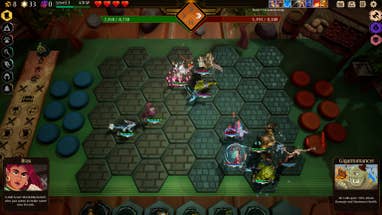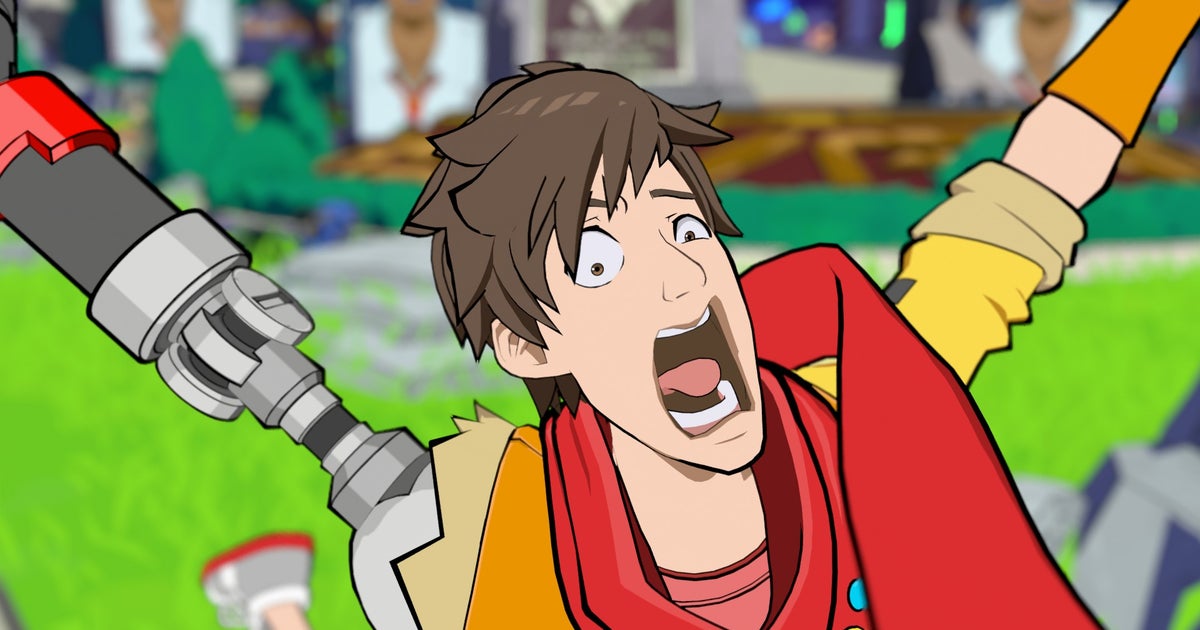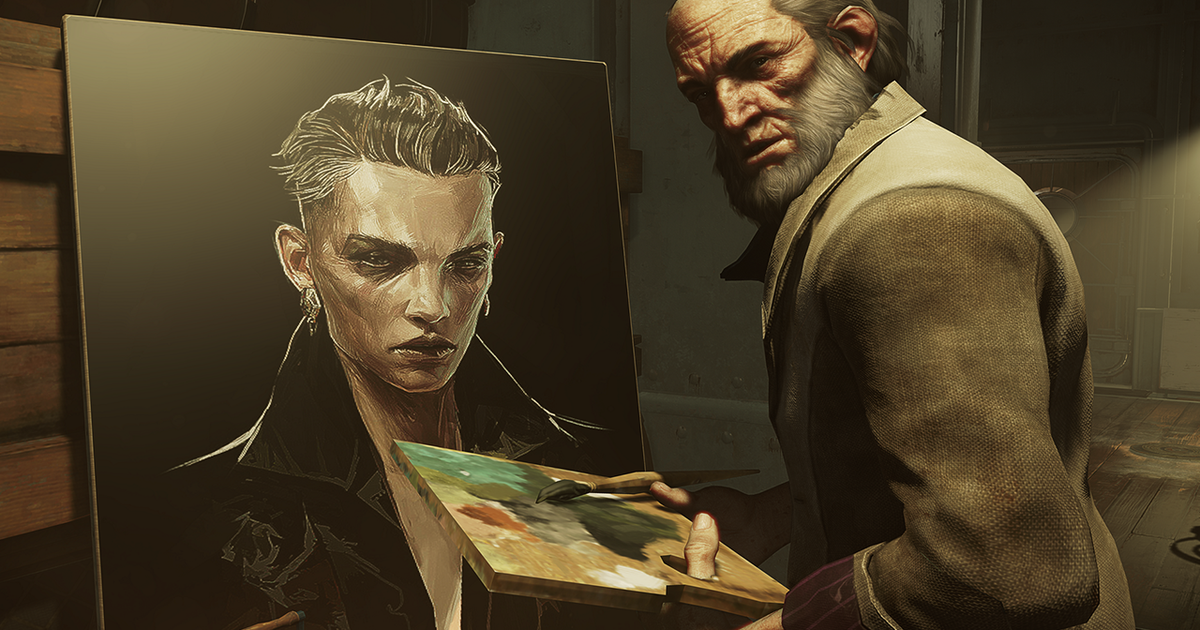As someone whose auto-battler experience has, up until now, only been limited to minor forays into the excellent Alice0-recommended Super Auto Pets, sitting down to play a run of Tales & Tactics was somewhat overwhelming. Recently launched into early access and made by the same team behind Slay The Spire's popular Downfall mod, this is a fantasy autobattler cloaked in the skin of a roguelike. That means that in addition to creating an army of tabletop-esque miniatures to do your automatic bidding on a grid-based board, you'll also be picking from randomly generated opponents on a lightly branching story map as you sword chop your way to your ultimate goal: The Grand Tournament.
It's an intriguing combo, but as a relative newcomer to the auto-battling genre, there's maybe a bit too much going on here for its own good. That's not to say I haven't had a good time with it so far, but there are so many things to juggle in my brain that I feel like I'm fumbling my way through it by chance rather than making confident and informed tactical choices.
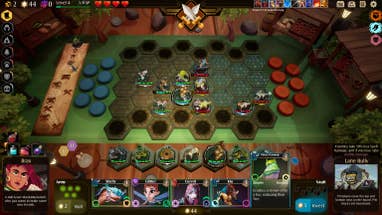 Occasionally, some tiles will have environmental debuffs, but when you have no control over anything other than your units' starting positions, any kind of tactical planning quickly goes out the window. | Image credit: Rock Paper Shotgun/Yogscast Games
Occasionally, some tiles will have environmental debuffs, but when you have no control over anything other than your units' starting positions, any kind of tactical planning quickly goes out the window. | Image credit: Rock Paper Shotgun/Yogscast Games
There's a fair amount to chew on when it comes to forming your auto-battling army. Like Super Auto Pets, you have a pool of money to spend on new units, and you can roll a fresh line of monsters in the shop for free before the start of each fight. You can roll again if you don't like what's in your free shop draw, but that will cost you two additional star points - which is the same currency you use to buy new monsters. The key is building up an army that gives you a good balance of its three main archetypes. You've got your skirmisher attackers, ranged magicians and tank-like vanguards who can soak up more damage than the other, but each monster also has their own skills and traits to consider as well. The traits are particularly important, as when you play them with other monsters with the same traits, you can trigger extra buffs and effects on the battlefield.
Archetypes and traits I can manage, but I must admit, I haven't been paying much attention to skills so far. This is partly because there are so many to pick from it can be hard to get a sense of how they might combine with other monsters you have, but they also just don't seem to be anywhere near as important tactically as the composition of your monster's archetypes. Heck, even their placement on your side of its quite large board - a grid of 4x5 hexes - doesn't seem to matter very much, as so far every fight boils down to plonking your attacks in the front, and your ranged bods in the back. Many of them move and charge across the board of their own accord as they hone in on remaining stragglers, too, so it seems baffling to have such a large (and mostly pointless) space to place a maximum of six monsters on.
 None of this text is important. | Image credit: Rock Paper Shotgun/Yogscast Games
None of this text is important. | Image credit: Rock Paper Shotgun/Yogscast Games
There's also the small, or rather large problem of its excessive text reams. There is a lot of story padding in this game, and most of it doesn't have any bearing on your adventure whatsoever. I don't mind a bit of story stringing me along in games like this every now and again - most great puzzle games have at least some sort of vague starting premise to get you going, for example, but once that's out of the way they're really just puzzle after puzzle after puzzle. As it should be. But Tales & Tactics doesn't quite strike the right balance here - at least not for me, and I think that's because it secretly wants to also be a D&D-style RPG as well as an auto-battling roguelike.
The great thing about Super Auto Pets, for example, is that it doesn't let anything get in the way of the auto-battles. You have your pet squad, a shop to buy more and better pets from, and off you go to pit them against other lines of pet squads. Rinse, repeat, forever. Beautiful. In a genre that's all about the numbers, systems and synergies between said numbers and systems, that's all I want, or anyone needs, to focus on. But Tales & Tactics constantly bogs itself down in paragraphs and paragraphs of description as you move from point to point on the map. It's inoffensive, but also painfully bland - the kind of stuff you'll find yourself clicking through as quickly as possible just so you get to the real meat of the problem: which opponent you're going to fight next, or what it actually costs to buy something from this shop you've just had described to you for three fat paragraphs.
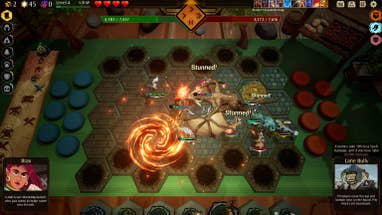 Sometimes a big dragon shows up to spice things up a bit (while also nuking your team into oblivion. You could do the same thing to the other team, though, provided you play four monsters with matching dragon traits. | Image credit: Rock Paper Shotgun/Yogscast Games
Sometimes a big dragon shows up to spice things up a bit (while also nuking your team into oblivion. You could do the same thing to the other team, though, provided you play four monsters with matching dragon traits. | Image credit: Rock Paper Shotgun/Yogscast Games
Ironically, Tales & Tactics displays this information beautifully, telling you straight up that you'll get these rewards going this way, or this much experience battling this bloke, or additional curse points but some really very good treasure if you do this much riskier thing instead. That's all I need or want to know in situations like this, and having to click through scores of text that contains nothing of nutritional value just slows down the pace of its otherwise quite fun auto-battling.
It is, of course, still in early access. There's time for things like this to be fine-tuned and smoothed out, and the rest of what's here is still very impressive. You may only have a single character to pick from at first, but even ill-fated runs can earn you enough Mastery points at the end of it to unlock a handful more for you to try out (out of a current total of seven), and each one comes with their own starting conditions that make fresh runs feel materially different from the last. Add to that dozens of additional modifiers that you can switch on and off to shake things up further and there are enough knobs and dials here to make each game into something quite different if you feel like it. I'm still not sure I wholly understand exactly what each of those knobs and dials actually does, if I'm honest, but I've had enough of a good time so far that it hasn't pushed me away completely. When my brain is less full of games like Baldur's Gate 3, Shadow Gambit: The Cursed Crew and The Lamplighters League, I hope to return to it further down the line to see if I can get the measure of it a little more successfully.

 8 months ago
85
8 months ago
85
